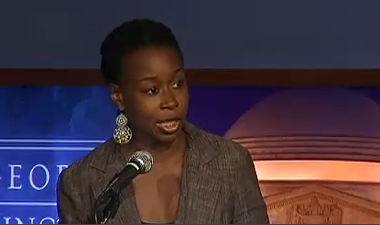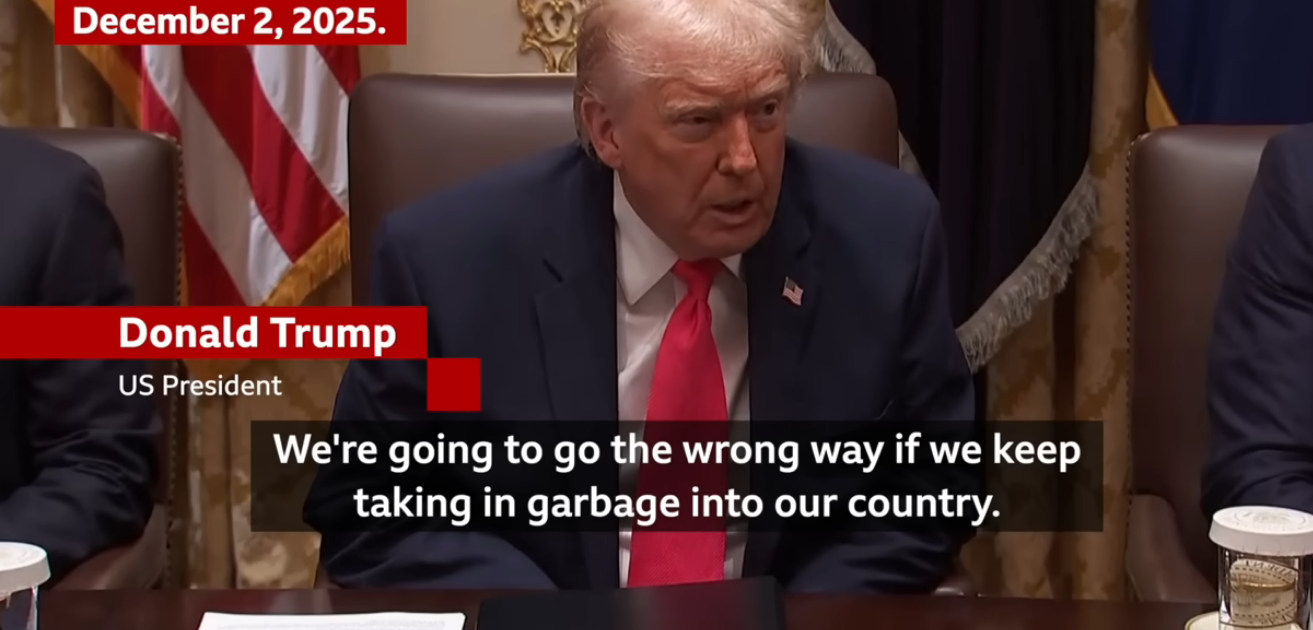Monifa Bandele
Leaders of Communities United for Police Reform (CPR) joined numerous advocates and experts to present testimony to President Obama’s administration on how to reform policing throughout the United States, but especially in major urban areas like New York City.
Testimony was submitted today from Communities United for Police Reform (CPR) and a range of CPR member organizations, including: Center for Constitutional Rights, Center on Race, Crime & Justice at John Jay College, Color of Change, FIERCE, NAACP Legal Defense & Educational Fund, New York City Anti-Violence Project, Streetwise and Safe.
Jose Lopez, lead organizer at Make the Road New York and Communities United for Police Reform Steering Committee member, sits on the 11-person Task Force appointed by President Obama.
Those who provided testimony emphasized the crisis of policing in communities of color including LGBT communities, and offered a series of actionable recommendations for reforming policing at the federal, state, and municipal level.
All of the testimonies submitted from CPR and CPR member organizations are available online.
“We are in a state of emergency,” said Monifa Bandele, a leader of Communities United for Police Reform (CPR), in her submitted written testimony. “This emergency is literally a fight for our lives. The unnecessary and tragic recent killings of Eric Garner, Akai Gurley, and Ramarley Graham in New York, Mike Brown in Ferguson, Tamir Rice, Tanisha Anderson and John Crawford in Ohio, Ezell Ford in Los Angeles, and too many others have cast a bright spotlight onto the abusive and discriminatory policies and practices that our communities face on a regular basis– This state of emergency has also posed a crisis of legitimacy for police.”
Bandele’s recommendations to President Obama reform were wide-ranging and substantive:
On police policy and practice, Bandele called for changes including: An end to discriminatory broken windows policing, and other discriminatory and abusive policing policies; standardized use of force policies with meaningful consequences for excessive force, that seek to eliminate excessive use of force and incentive de-escalation.
On police accountability and transparency, Bandele called for:
Requiring officers to identify themselves and provide the officer’s name, rank, command and a phone number for the applicable Civilian Complaint Review Board at the end of police encounters;
Requiring officers to provide the specific reason for their law enforcement activity, such as vehicle search, stop-and-frisk; Requiring officers to explain that a person has the right to refuse a search when there is no legal justification for a search and to ensure objective proof of voluntary and informed consent when it is provided; requiring police departments to document and publicly report on police encounters, including stops, frisk, searches, summons and arrests, to include demographic information;
Full accountability through police disciplinary procedures and the criminal justice system for all officers responsible for killing Garner, Gurley, Graham, Brown, Rice, Anderson, Crawford, Ford, and others; establishment of special prosecutors for cases involving civilians killed by police and/or while in police custody; establishment of a federal database on use of force and civilian deaths, including firearm discharges, killings by police, and deaths while in police custody, disaggregated by demographic data such as race, gender, and age.
Sherrilyn Ifill, President and Director-Counsel of the NAACP Legal Defense & Educational Fund provided oral testimony based on NAACP LDF’s decades of litigation and advocacy experience.
Offering concrete steps that can be taken, Ms. Ifill also highlighted the importance of addressing racial bias in any law enforcement training: “The current crisis in police-community relations makes clear that training must focus squarely on explicit and implicit racial bias, the use of force, de-escalation techniques, and the appropriate engagement with youth and those who exhibit mental health concerns,” Ifill said.
Organizations like the NYC Anti-Violence Project, FIERCE and Streetwise and Safe also made recommendations specifically focused on the LGBT community: implementation of LGBT-inclusive anti-profiling measures, establishment of nationwide standards for treatment of LGBT people in custody, and a ban on the use of condoms as evidence in all prostitution-related crimes.
Another key area of focus in testimony by LGBT organizations was the U.S. Department of Justice’s recent expansion of the ban on racial profiling by federal law enforcement agents to include the use of sexual orientation, gender, or gender identity, along with national origin and religion, to any degree in the initiation of law enforcement interactions.
The Obama administration was urged by LGBT advocates to expand these protections to reach all federal and federally funded law enforcement activities, including and especially those that target Muslim communities and take place at our borders, which until all too recently were closed to LGBT immigrants. These same advocates also called for passage of the End Racial Profiling Act in Congress, which includes protections on the basis of gender, sexual orientation, and gender identity.
ColorOfChange delivered written comments from more than 8,000 of their members:
“We are proud to deliver the comments of more than 8,000 ColorOfChange members, representing millions of other members and their allies nationwide who are calling for major advances in police oversight and accountability in the coming year. The President’s task force is an important step in the right direction and we are hopeful that it will offer concrete changes to keep our communities safe. But commissions are only as valuable as the change they bring about. Last week, a ColorOfChange member received a solicitation from the White House to submit feedback on priorities for the new year and policing wasn’t even on the survey. We call on President Obama and Attorney General Holder to treat this matter with the utmost seriousness and immediately move forward concrete reforms that proportional to the scale of today’s crisis,” they said in their testimony.
In her submitted written testimony, Delores Jones-Brown, Professor of Law, Police Science, and Criminal Justice Administration at John Jay College of Criminal Justice, and founder of John Jay’s Center on Race, Crime and Justice, focused on San Diego’s neighborhood policing as a superior alternative to the broken windows policing first introduced in New York City in the 1990s.
“Between 1991 and 1998, when NYC’s homicide rate declined by 70.6 percent, the homicide rate in San Diego declined by 76.4 percent. When NYC’s robbery rate declined by 60.1 percent, the robbery rate in San Diego declined by 62.6%. After the 1990s, crime continued to decline in San Diego, with overall violent crime decreasing by 27% between 2002 and 2012 compared to a 19% reduction in NYC… By using “neighborhood policing” (NP), the San Diego police department (SDPD) managed to keep crime low without increasing the number of arrests; without substantially increasing the number of sworn officers; and, without increasing the volume of citizen complaints. What SDPD has identified as “neighborhood policing” is a form of “community policing”–”problem oriented policing” that allows police departments to tailor policing service and enforcement techniques to the unique needs of distinct neighborhoods. Its strength lies in utilizing the voices of neighborhood residences in both identifying crime problems and making decisions about how best to address such problems once they have been jointly identified,” said Jones-Brown in her testimony.
“Between 1991 and 1998, when NYC’s homicide rate declined by 70.6 percent, the homicide rate in San Diego declined by 76.4 percent. When NYC’s robbery rate declined by 60.1 percent, the robbery rate in San Diego declined by 62.6%. After the 1990s, crime continued to decline in San Diego, with overall violent crime decreasing by 27% between 2002 and 2012 compared to a 19% reduction in NYC… By using “neighborhood policing” (NP), the San Diego police department (SDPD) managed to keep crime low without increasing the number of arrests; without substantially increasing the number of sworn officers; and, without increasing the volume of citizen complaints. What SDPD has identified as “neighborhood policing” is a form of “community policing”–”problem oriented policing” that allows police departments to tailor policing service and enforcement techniques to the unique needs of distinct neighborhoods. Its strength lies in utilizing the voices of neighborhood residences in both identifying crime problems and making decisions about how best to address such problems once they have been jointly identified,” said Jones-Brown in her testimony.





